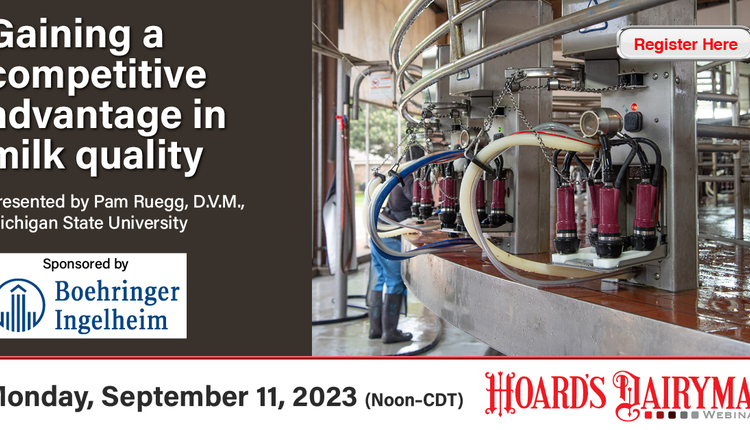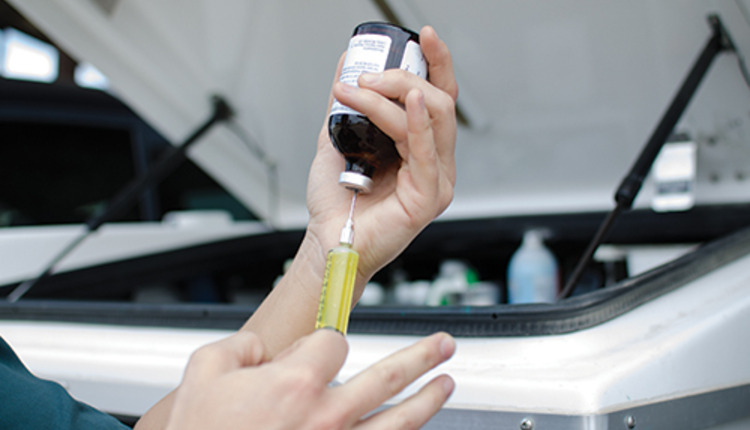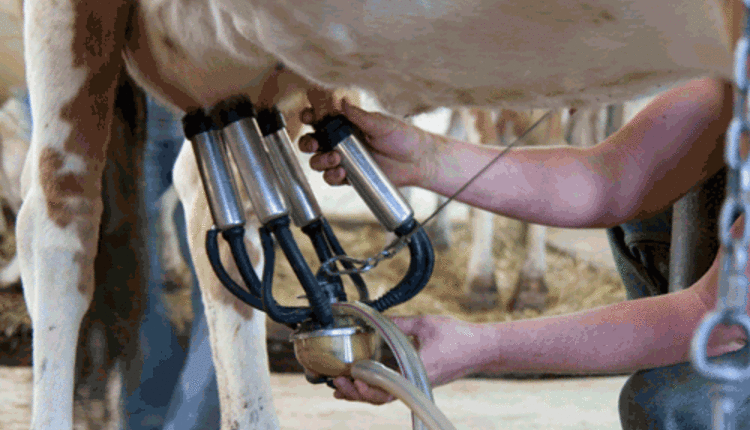The author is a professor and the chair in antimicrobial resistance at the Michigan State University College of Veterinary Medicine.

When I spotted it, I recalled the old saying, “When you hear hoofbeats, look for horses, not zebras.” Veterinarians learn that saying to remind us that common things occur commonly, and we need to start disease investigations by looking for the most typical causes of the problem instead of rare or unusual potential causes.
This principle almost always applies to milk quality problems, and when we begin to investigate mastitis issues, we should start by looking for the most common risk factors first. Based on their importance in controlling new intramammary infections, my first step is usually to review the effectiveness of pre- and postmilking teat dips.
Our best defense
The udder is on the bottom of the cow, and the teats are constantly exposed to bacteria. Not all exposures to bacteria result in mastitis; infection will occur when the bacterial challenge is large enough to overwhelm the cow’s physical (teat sphincter) and immunological defenses. Exposure to mastitis-causing bacteria can occur between milkings when teats may be exposed to bacteria that are found in the bedding, walkways, and pastures of their environment. Exposure can also occur during milking, such as when teats are exposed to infected milk in a teat cup that came from an infected quarter of another cow.
The key to controlling mastitis is to reduce the number of bacteria that end up on the teat skin. To accomplish this, we need to focus on reducing pathogen exposure from both the environment and during milking. Decades of research have demonstrated that the consistent and adequate application of commercially developed and efficacious pre- and postmilking teat dips reduces new intramammary infections by 50%. We have no other milking practices that are as effective in reducing mastitis as teat dipping. When teat dips are not applied to all teats, or when coverage is inadequate, the risk of developing new infections climbs.
Help them work
Pre- and postmilking teat dips work in similar ways to reduce the number of bacteria on teat ends, but they target different routes of pathogen exposure. Premilking teat disinfection (predipping) is required by the Pasteurized Milk Ordinance (PMO) as a hygienic step to ensure that teat cups are applied to clean and dry skin. When effectively performed, predipping and teat drying greatly reduces the number of environmental bacteria (such as coliforms and Streptococci) that accumulate on teats when the cow returns to its housing area after milking is completed.
In contrast, postmilking teat disinfection (postdipping) is a highly effective method of reducing the contagious transmission of bacteria such as Staph. aureus (and others) that can contaminate teat skin during milking because of exposure to infected milk present in teat cup liners. The consistent and thorough application of postdips is an effective way of reducing the transmission of contagious pathogens such as these among cows. To fully control mastitis, then, both pre- and postmilking teat disinfection need to be consistently and properly performed.
While both pre- and postmilking teat dipping are highly adopted practices on dairy farms, I routinely observe problems with the consistency of application and teat dip coverage (Figure 1). To be effective, use only commercially marketed teat dips from reputable companies. The manufacturer should be able to provide results of research studies that have demonstrated the product’s effectiveness in reducing the number of mastitis-causing bacteria on the teat skin.
Train milking technicians to consistently cover at least 75% of the teat skin when dipping, with the teat ends completely covered. When teats are missed or teat dips are not applied to the teat end itself, the risk of new infections rises, and the economic benefit of using the teat dip declines.
Correct application of pre- and postmilking teat dips seems easy, but milking can be a tedious process, and it is important that milking routines are designed to allow milking technicians sufficient time to correctly sanitize teats before attaching the milking unit. They also need to be supplied with the proper tools and have the time to sufficiently apply postdips. Assessment of postmilking teat dipping effectiveness is easiest when colored dips are used and should be routinely performed outside of the milking parlor to provide feedback to milking technicians.
Start with the basics
I was surprised when I saw the zebra on the dairy farm because zebras are exceptionally rare. However, I am not surprised when I see inadequately performed teat dipping on a farm because it is, unfortunately, very common.
When I am helping farmers and their veterinarians solve mastitis problems, I start by looking for the most common things. When mastitis issues arise, teat dipping should always be assessed before moving on to evaluating less common issues. If teat dipping is inadequate for any reason, it often results in more frequent cases of mastitis. Consistent and proper application of both pre- and postmilking teat dipping remains a fundamental practice that needs to be continually emphasized.









